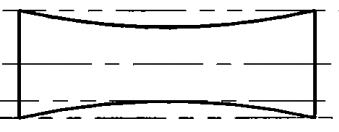Kedu
Mechanical
- May 9, 2017
- 193
I'm trying to grasp ISO concepts and I would like to clarify some on my (most likely) misunderstandings:
A hole is dimensioned for size and location:
Ø40 ± 0.1 E (envelope requirement)
pos Ø0.05 (circle X) to A primary, B secondary and C tertiary
is the above scheme equivalent with
Ø40 ± 0.1 GX
pos Ø0.05 to A primary, B secondary and C tertiary
On the same token:
A pin is dimensioned for size and location:
Ø40 ± 0.1 E (envelope requirement)
pos Ø0.05 (circle N) to A primary, B secondary and C tertiary
Could its (pin's) definition also be written as:
Ø40 ± 0.1 GN
pos Ø0.05 to A primary, B secondary and C tertiary
Thanks for any input and corrections your might offer.
A hole is dimensioned for size and location:
Ø40 ± 0.1 E (envelope requirement)
pos Ø0.05 (circle X) to A primary, B secondary and C tertiary
is the above scheme equivalent with
Ø40 ± 0.1 GX
pos Ø0.05 to A primary, B secondary and C tertiary
On the same token:
A pin is dimensioned for size and location:
Ø40 ± 0.1 E (envelope requirement)
pos Ø0.05 (circle N) to A primary, B secondary and C tertiary
Could its (pin's) definition also be written as:
Ø40 ± 0.1 GN
pos Ø0.05 to A primary, B secondary and C tertiary
Thanks for any input and corrections your might offer.

